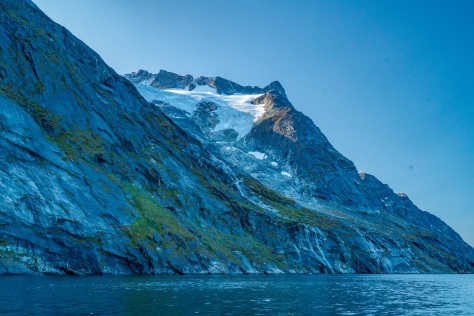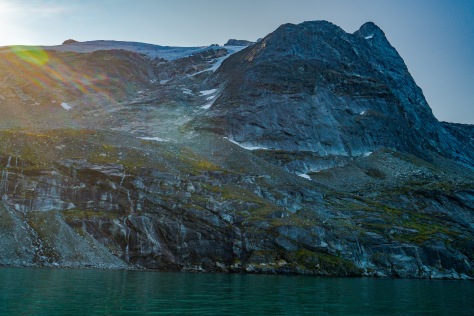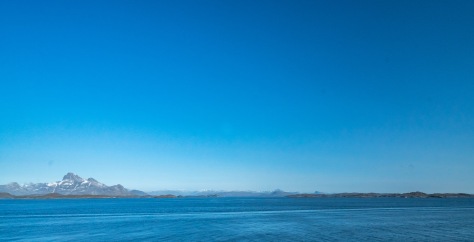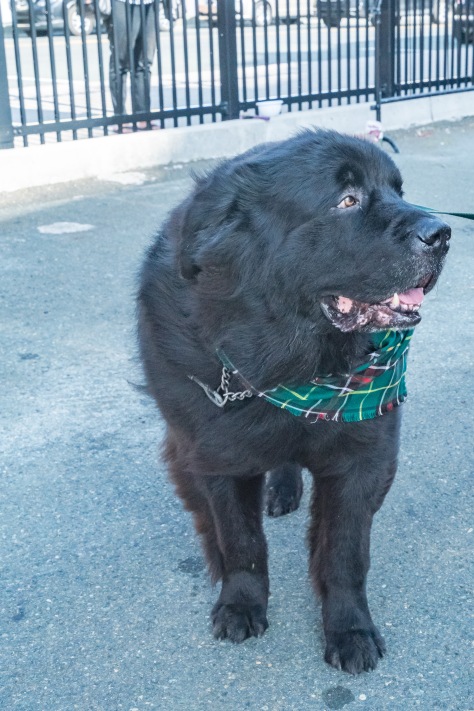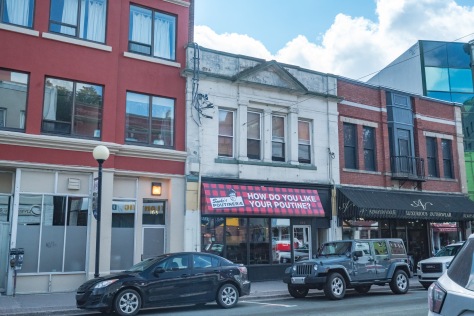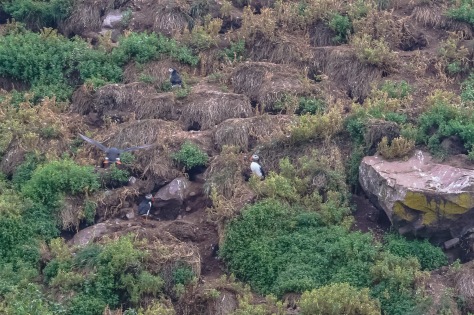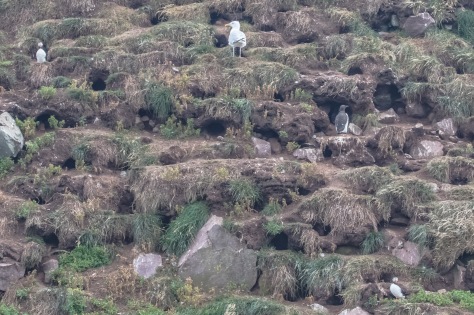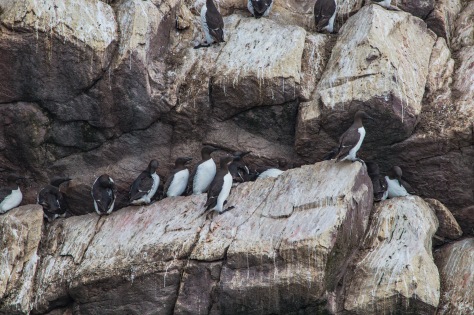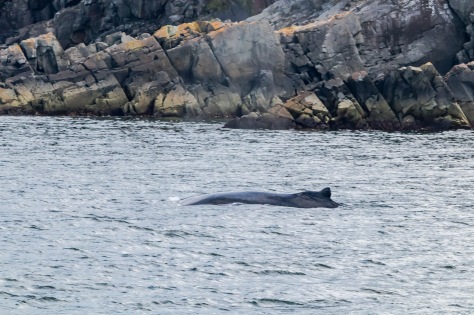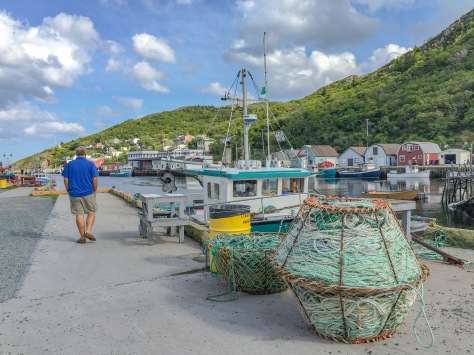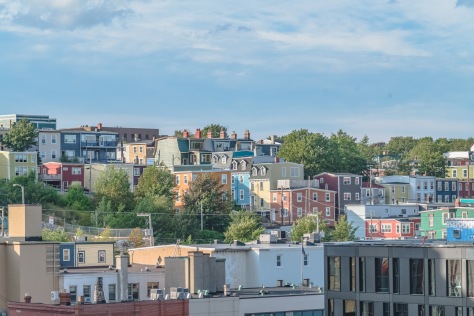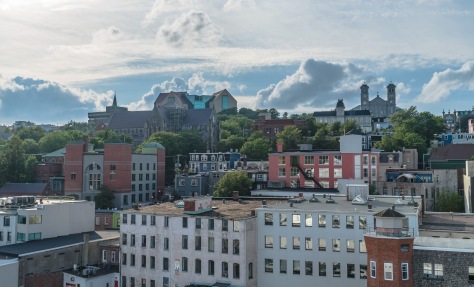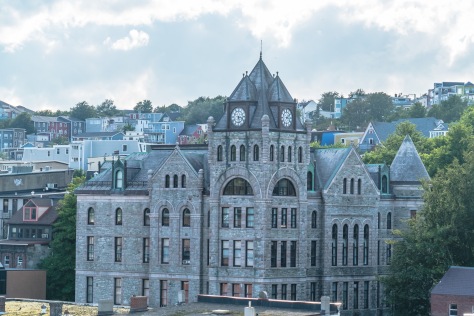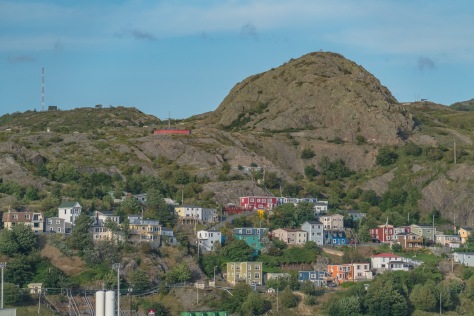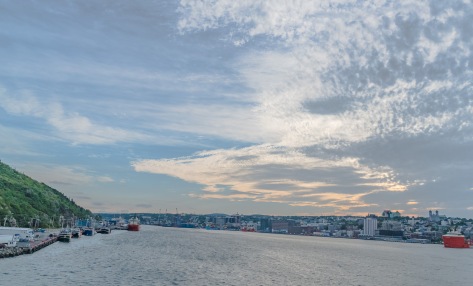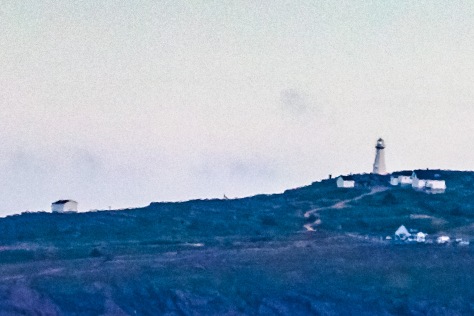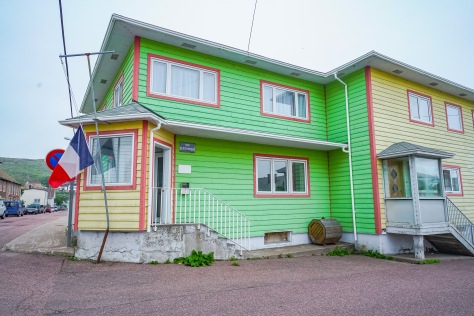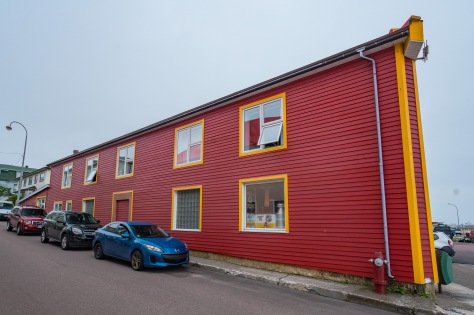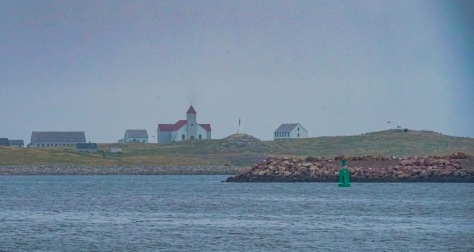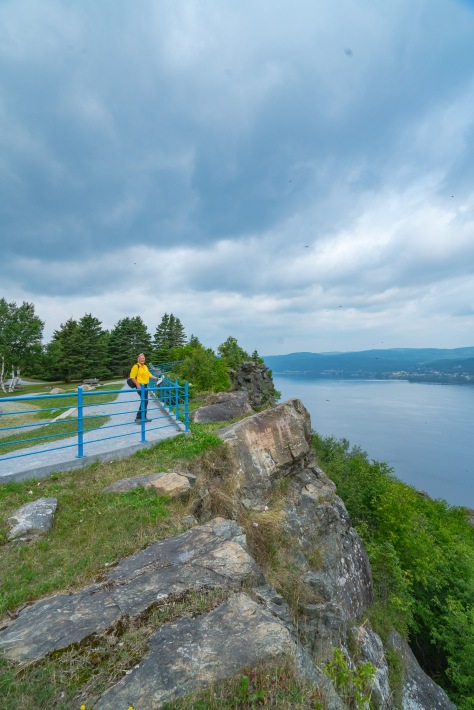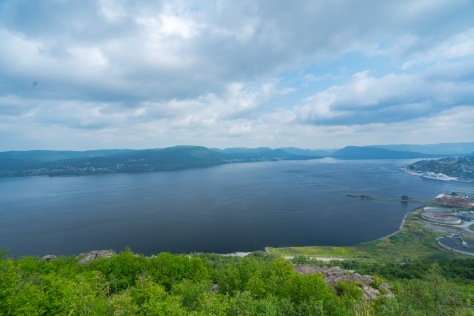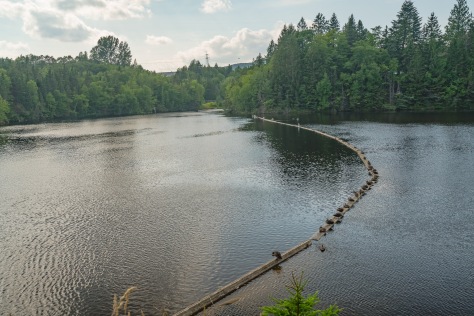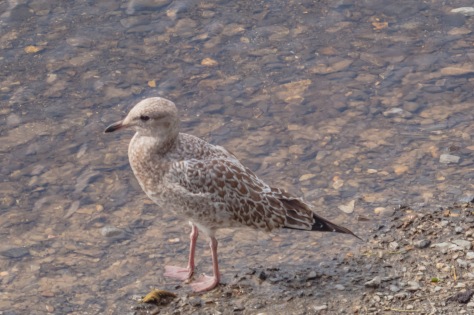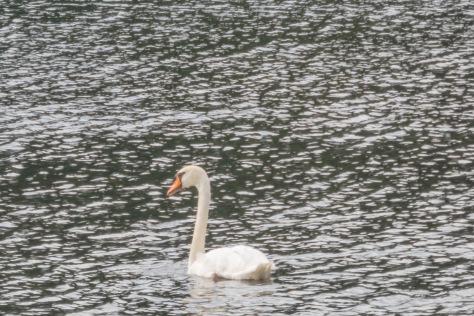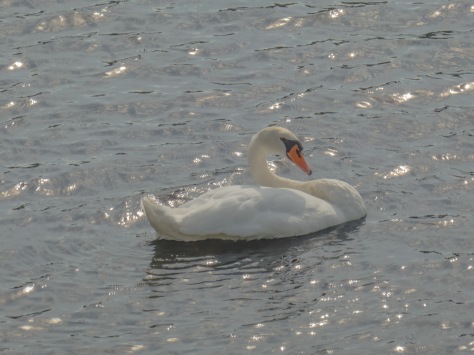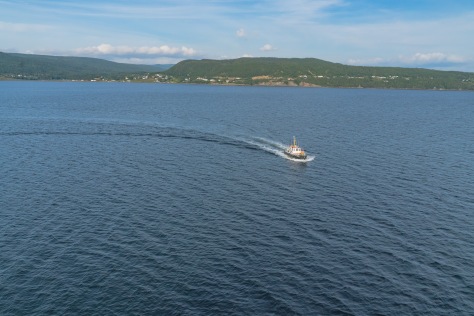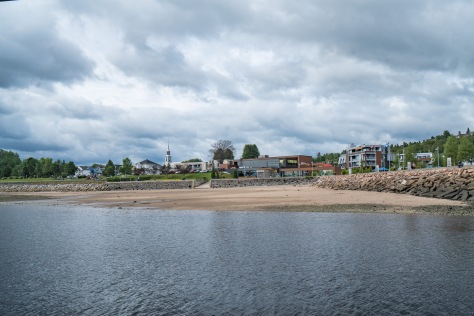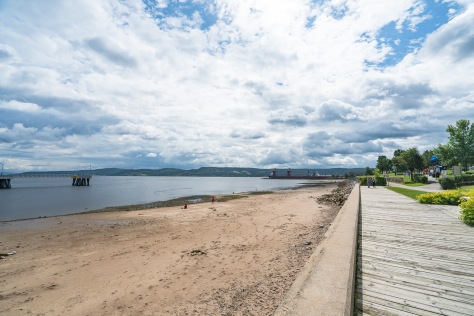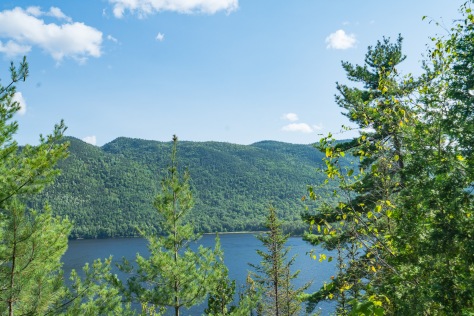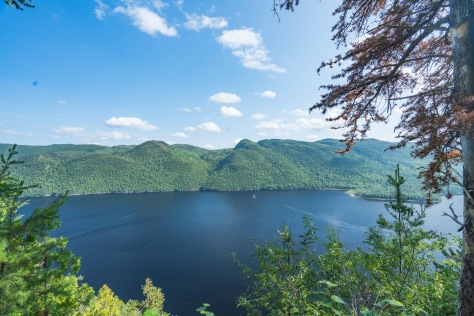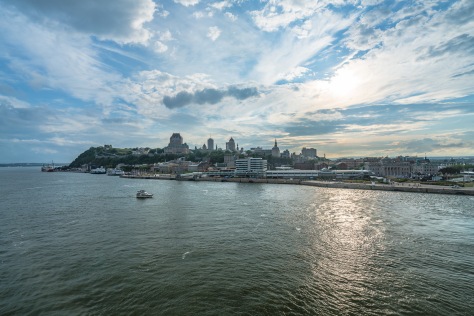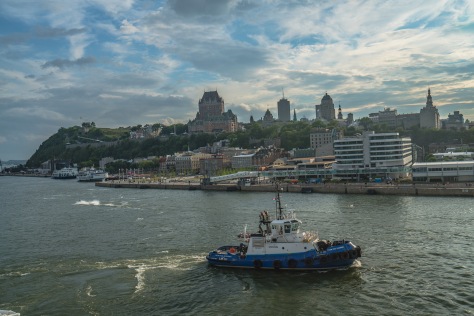August 30, 2017:
Jim and I arose with the dawn on this, our last day in Greenland. And what a grand day it was! We bundled up to survive the cold wind off the glaciers, and rushed up on deck. At 7 this morning, we began our 7 hour passage through Prinz Kristian Sund (Prince Christian Sound), named for the late Prince, and later King of Denmark.


As Wikipedia says: “The Prince Christian Sound connects the Labrador Sea with the Irminger Sea. It is around 100 km (60 miles) long and it is narrow, sometimes only 500 m (1500 ft) wide. There is only one settlement along this sound, Aappilattoq.
The long fjord system is mostly surrounded by steep mountains reaching over 1200 m height. Many glaciers going straight into its waters calving icebergs.”
Once again, we have been blessed with a glorious day for this passage. In fact, until last night, we were not even sure we were going to be able to do this part of our trip, as all the calving glaciers can create so much sea ice and glaciers that the passage can become unsafe, which happened to another ship just three weeks ago. While there is a possibility of seeing marine life, and animals on the surrounding slopes, the real show of the day is the topography itself. The steep walls of the main fjords and those that branch off from them are crowned with numerous glaciers, both hanging, and some reaching the sea. The water itself is a mix of saltwater overlaid with fresh water laying on top from the melting glaciers. Jim and I watched awestruck as we glided through this incredible fjord.







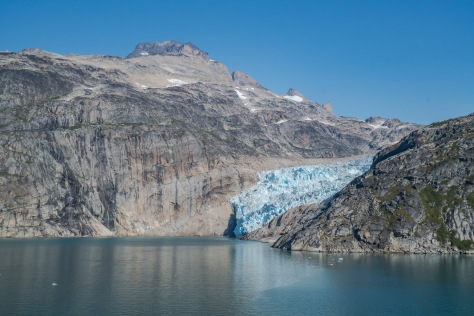
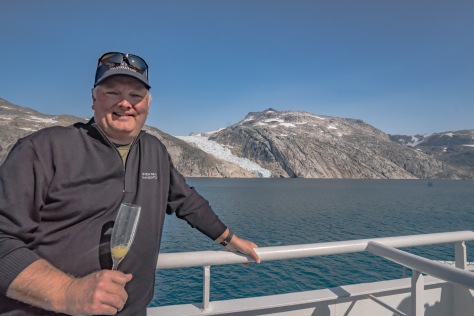


Jim and I have been fortunate enough to see both the Alaskan glaciers in the Bay of Glaciers and the Patagonian glaciers in Chile and Argentina. However, this is really a contender for the most awe-inspiring glacier cruise! To cap matters, the whole 100 kilometer channel is incredibly remote, with much of the passage blocked by ice most of the year. The only settlement of any size is the tiny town of Aappilattoq, which we passed about two hours into the transit. Waving goodbye to Aappilattoq, we allowed ourselves to go downstairs for breakfast. It was such a beautiful day, we actually ate outside with a prime view of the glaciers behind us.




In addition to the incredible views of the glaciers, there were also countless icebergs, and a constant wash of “sea brash” (the smaller iceberg pieces that litter the surface of the water. At one point, we all became very excited because we thought we saw a large seal sunning itself on an iceberg. However, it was just a bit of dirty ice caused by the terminal moraine at as the iceberg relentlessly ground itself down to the water and calved from its glacier. Darn! However, in my opinion, by far and away the best feature we saw was a glimpse into the massive Greenland ice sheet.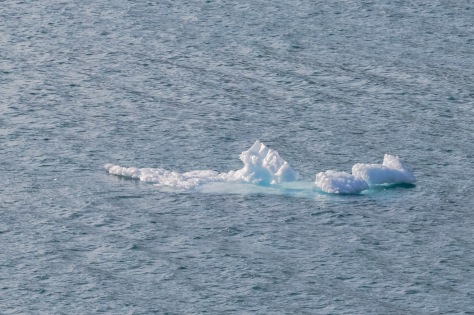
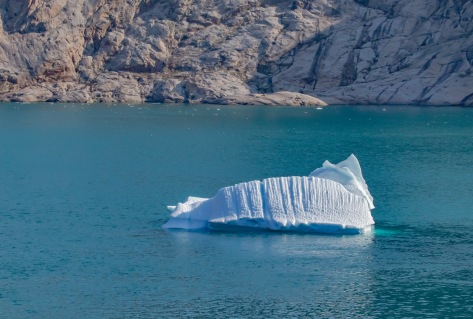
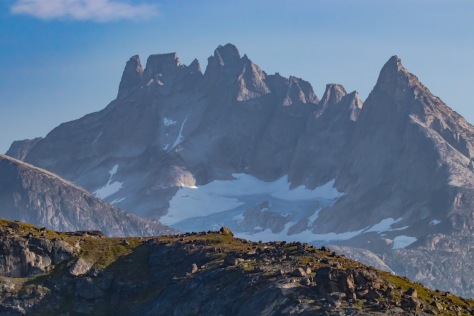

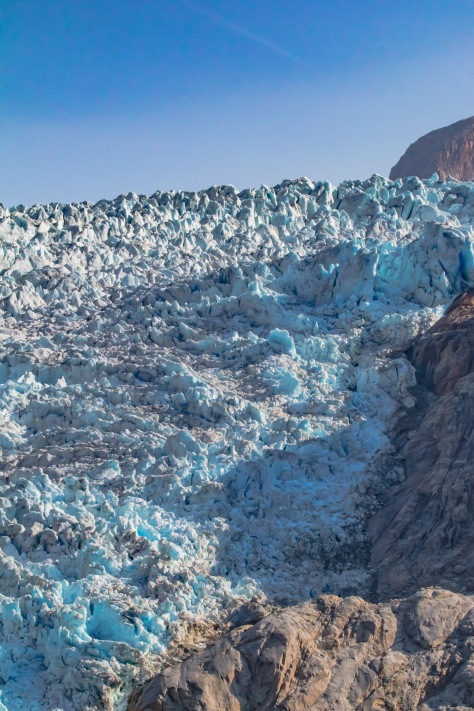







Finally, about 1:30, we exited fjord, and sailed out into the Irminger Sea. Our naturalist aboard, Dr. Michael Scott, had told us that this stretch to Iceland is some of the best whale watching area in the world, so we didn’t want to miss a minute. Jim and I took a break about 1:45 for a belated lunch. While we were eating on the stern veranda, sure enough, at least 25 whales passed by, spouting off like a calliope, but no photos as they were too far away (and my camera equipment was having a well-deserved nap).





















 Once again, we are blessed with a beautiful sail away. It’s even warm enough that Jim strips down a shorts and flip flops, even though we can see little icebergs bobbing in the bay.
Once again, we are blessed with a beautiful sail away. It’s even warm enough that Jim strips down a shorts and flip flops, even though we can see little icebergs bobbing in the bay.







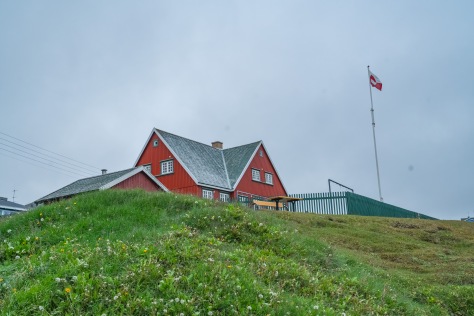






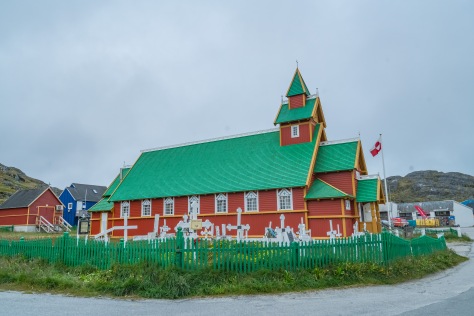







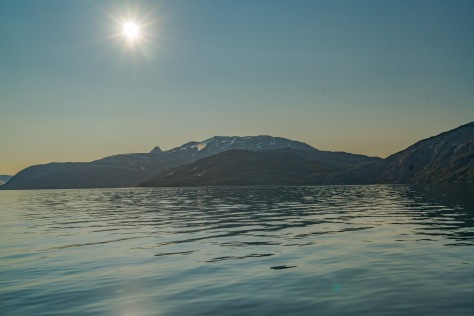




 Almost right away, we see out first iceberg; a baby by Antarctic standards. This is a beautiful day for a harbor cruise, and the water is almost glass-like. However, what we all most want to see are whales; most likely humpbacks, at this time of year. We keep our eyes peeled, and I go outside periodically to snap photos as we fly across the fjords.
Almost right away, we see out first iceberg; a baby by Antarctic standards. This is a beautiful day for a harbor cruise, and the water is almost glass-like. However, what we all most want to see are whales; most likely humpbacks, at this time of year. We keep our eyes peeled, and I go outside periodically to snap photos as we fly across the fjords.

